 USB Firewall Key now available at special pre-order price!Wednesday 27 January, 2016
Dear esteemed customers,
We have been hard at work caring for the future sonic landscape of USB audio, and we have come a very long way in a relatively short time. USB was never intended for audio use, but its application has become so widespread that we decided to apply some 'less loss' to it and see how far we could bring it. These trials and tests brought us over the course of a year to the realization that there is much more to be had from USB than has hitherto been imagined. USB DACs count on re-clocking in order to function. They must have power in order to do so. Removal of even low traces of HF noise in any USB DAC's input is therefore crucially important, because the power provided to the USB DAC comes from the USB connection itself. A look inside the LessLoss USB Firewall Key What it is, and what it does so well Based on the very latest LessLoss Skin-filtering technology, the LessLoss USB Firewall Key is our ultimate tool provided for you to use in conjunction with any USB DAC in order to achieve much better sound quality than stock. When you purchase a USB Firewall Key, you are getting the pinnacle of 14 years of critical noise reduction development in a handy, neat, easy-to-use product which you simply plug in and play. It does not require any drivers or software. Instantly, the noise at the analogue output drops and more background details become audible. Where before you heard a string section, you now perceive 24 human beings each striving for harmonic togetherness and mutual balance. Where before you enjoyed a jazz drum solo for its complexity and power, you now get all that plus a real sense of the inner rhythmic drive which is only expressed through the musician's interaction with the drums. You are getting more of that musical touch which words just can't describe. You know how in a public master class given by the world's great teachers much attention is given to expression of personality and freedom from constraint. Well, here it is similar: the USB Firewall Key frees up the USB DAC to perform freely and effortlessly. The computer source starts to sound much more real and life-like. It is no longer calculating bits, but is now flowing and producing musical expression. At times it will be possible to even forget it is a computer playing. Just plug it in and go - nothing else to it The LessLoss USB Firewall Key features two USB Type A connectors: the male is the input to the USB Firewall Key and the female is the output. You can plug the output into a USB cable and use the cable to reach your DAC. Or, if the DAC features a male Type A connector, you can simply plug the DAC directly into the female plug of the USB Firewall Key. A snap to connect The above picture shows how one can connect a mass-produced USB DAC with analogue outputs directly into the USB Firewall Key. The change in sonic performance is not subtle. Connecting to a computer The USB Firewall Key connects into a USB Type A female outlet of any computer or network player. The other end receives your USB DAC. The Firewall Key's position directly between the computer's motherboard and the USB DAC enables the USB DAC to perform on a completely different level. We worked very hard on this During development, we spent much critical R&D time investigating any sonic influence various enclosure materials would have on the sound quality. In the above picture, you can see we even made one out of Corian. Corian is a Dupont product and is an interesting material for us acoustically. It is a plastic into which is mixed up to 50% tiny particles of aluminum powder. Upon hardening the result is a very hard material which has excellent acoustical damping properties. However, after field testing the results and comparing them with our previously proposed bog wood solution, it was painfully obvious that the Corian solution is far inferior. A small comparison here may aid in explaining the difference. A starting point for general reference You know how there is an undeniable difference in sonic quality between Sigma-Delta converters (also called 1-bit converters) and parallel resistor converters. The parallel resistor converters make instantaneous voltage outputs at the exact sampling rate speed. Sigma-Delta converters calculate change but do not operate at the real sampling rate, but at a much higher speed in the MHz range. Long story short, the sound of the almost extinct parallel resistor conversion process always sounds more natural, more meaty, and with details which imitate natural hearing processes rather than the more 'sexed-up' harsh digital sound of Sigma-Delta. We have much experience with these differences and we have found general consensus among any people who have seriously studied these differences in direct experience. Anyway, this is our learned opinion and can be a starting point for you to grasp the difference in sound between aluminum content in plastic and natural wood. Corian, bog wood, Sigma-Delta and Parallel Resistor DACs Let us suppose we are using a Sigma-Delta USB DAC and then switch between the bog wood and the Corian USB Firewall module. Whatever pre-convictions we had about the Sigma-Delta process were amplified by the Corian. The sound became even more Sigma-Delta-like. Switching to the bog wood version, we feel the human element surfacing again, much as we do when comparing the sound between Sigma-Delta DACs and parallel-resistor DACs. Using two Firewalls Using two of each type of USB Firewall Keys in series further amplified this difference. In fact, using two bog wood Firewalls in series on the Sigma-Delta DAC made it surprisingly close in sound quality to that of a good parallel-resistor DAC! Now THAT'S progress! This achievement alone is worth gold, because up until now the Sigma-Delta process has been much less expensive for designers to implement than using the parallel-resistor process. This is the only reason the Sigma-Delta process has nearly completely shoved the parallel-resistor process out of the market. Cheapness of production, meaning cheaper prices to achieve 'good specs'. But even if great specs are a necessity for good sound, great specs alone do not guarantee great sound. But for the money, they might guarantee more business... FW Key vs. Sampling Rates war Another thing to consider in this regard is the whole sampling rate race, which is one of the most misconceived topics in all of audio. Let us put sound quality in perspective of sampling rates vs. the USB Firewall Key. With two USB Firewall Keys installed, listening to music at any sampling rate, including 44.1kHz, is by far more pleasant and convincing, by far more rich, subtle and telling, than listening at 192 kHz without any Firewall Key installed. What happens in this last instance is the sound becomes thin, harsh, two-dimensional, electronic-like, and ultimately boring and cold. It is not the sampling rate which makes the quality, but the actual conversion process which was used during the making of the digital files in the first place. Likewise with playback: the only reason higher sampling rate files sound better to anyone, reviewers included, is because they were made from original source material using better analogue-to-digital conversion technologies than their 44.1kHz converted predecessors way back in the late 80's. If today a whole line of re-mastered digital files were released using today's best A to D conversion technology, and still at 44.1 kHz, they would sound just as much better to the consuming public and critics than the digital releases from the 80's. It is merely an inevitable product of the audio marketer's number's race (borrowed from the world of Horsepower in cars and Processor Speed in computers) which leads to this wildly misconceived virtue of high numbers in audio. Using the USB Firewall Key completely dwarfs any minute changes brought about by sampling rate conversion. One will not even recognize one's own DAC. The natural process which transforms bog wood Bog Wood has been buried within a peat bog for thousands of years. The anaerobic conditions of the bog protect the wood from organic decay, while the underlying peat provides acidic conditions where iron salts and minerals react with the tannins in the wood, gradually giving it a distinct dark brown to almost fully black color. Because the wood has changed structure over numerous millennia, it is some 15-20% denser than raw wood.  Hard to find, it is very expensive Technological know-how for extracting Bog Wood from riverbed or bog sources and safely transporting it through remote muddy bog conditions adds to its expense and rarity. After all, Bog Wood needs to be found, which means much time is spent during thorough inspection of the deep depths of a considerable underwater area, usually in unpredictable conditions. Not like logging a forest Then it is vital to create all necessary conditions on the river bank for the safe lifting of the multi-ton extraction, strictly observing requirements of safety precautions and ecological norms. Often it is even necessary to prepare access roads and a stable industrial platform. But there is now another way! Using Bog Walnut has been made viable through a newly patented industrialized process developed here in Lithuania. The process has no relation to other dyeing processes which use ammonia or other chemicals and heat. In this case, it is the exact same process which happens naturally over thousands of years under the earth, but in controlled conditions where much more usable wood results in a more predictable fashion. The process still takes time, but only weeks instead of thousands of years. A unit to cherish The special bog wood has very striking varying color, fading from black on the outer annual rings to dark brown at the heart. The flames can be richer in appearance than raw wood flames. Smokey, rich, and deep color tones combine into an historical artifact of natural beauty. No two units will look alike. Combining the natural sound of the bog wood enclosure with the natural sound of the latest iteration of the LessLoss Firewall's Skin-filtering technology brings together the best of the natural world with that of industrial production processes. The result is a small device of great power and performance, at reasonable cost. So, how much, when can I get it, and how do I order? Retail price: 385 USD each. We would like to offer you access to a pre-ordering arrangement. It will take weeks to source the wood and for all processes to be carried out. Approximate times are as follows (we don't have guarantees on these, but they are high ball-park figures): Sourcing the wood: 2 weeks lead time Processing the wood: 3 weeks lead time Pre-milling the wood blanks: 1 week lead time Milling the enclosures: 2 weeks lead time Laser engraving: 1 week lead time Assembly, pack & ship: 1 week lead time Ball-park figure from now until ship: 10 weeks (all these numbers are high estimates, so if anything we should be erring on the unfortunate end, and shipping will happen sooner, fortunately!). Pre-order promotional price: 231 USD each. Take two (recommended) for only 438 USD (5% off). These prices are shipping included! We are now ready to accept your pre-order as follows: Please go to the Firewall module page which is here. Choose the USB Firewall Key, and you will see it is offered at reduced pricing for this promotional period. The promotional price will end without notice, right when we know our shipping schedule. (You are completely safe for a few weeks). P.S. The only difference you see in the above pictures and the actual production unit will be the addition of the LessLoss logo. We have yet to decide which route to go: laser engraving or mechanical precision milling. In either case, you can be sure to receive quality product of timeless performance and good looks. If we cannot send out our product with a complete sense of pride, we will work hard towards that goal until we are able to do so with the most sincere feelings of accomplishment. This goes without saying, but to those who are new to LessLoss products, you now have it in writing. P.P.S. Please click here for more images of various bog wood products from our earlier Newsletter. This material, formed over thousands of years, is fascinating, and we are excited to be using it for something as contrasting to it as a modern USB device. Sincerely,
Louis Motek | LessLoss.com
|
- Products
- Power Cables
-
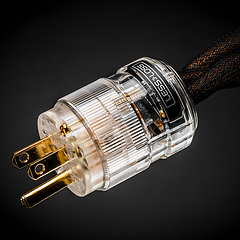 C-MARC™ Prime
The must have foundation for any sound system today.
From
$
486
C-MARC™ Prime
The must have foundation for any sound system today.
From
$
486
-
 C-MARC™ Classic
The unique super-cable power cord everyone's talking about.
From
$
1148
C-MARC™ Classic
The unique super-cable power cord everyone's talking about.
From
$
1148
-
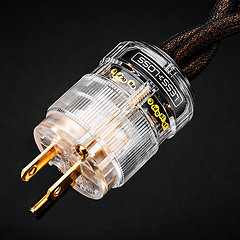 C-MARC™ Classic Entropic Process
The peerless, advanced Classic masterpiece.
From
$
1934
C-MARC™ Classic Entropic Process
The peerless, advanced Classic masterpiece.
From
$
1934
-
 C-MARC™ Stellar Entropic Process
The crown jewel for highest performance power connection.
From
$
2450
C-MARC™ Stellar Entropic Process
The crown jewel for highest performance power connection.
From
$
2450
-
- Loudspeaker Cables
- Interconnect Cables
-
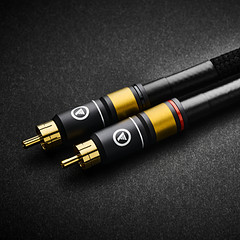 RCA C-MARC™
Cotton-clad true Litz • Whopping 2.3mm2 polarities
From
$
850
RCA C-MARC™
Cotton-clad true Litz • Whopping 2.3mm2 polarities
From
$
850
-
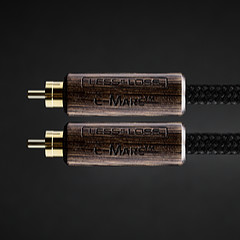 RCA C-MARC™ Entropic Process
Our finest RCA cable • Polished Wenge barrels
From
$
1428
RCA C-MARC™ Entropic Process
Our finest RCA cable • Polished Wenge barrels
From
$
1428
-
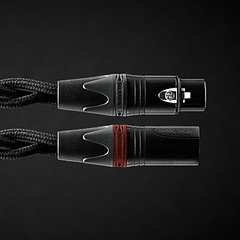 XLR C-MARC™
A hand-braided cotton-clad unique Litz construction
From
$
950
XLR C-MARC™
A hand-braided cotton-clad unique Litz construction
From
$
950
-
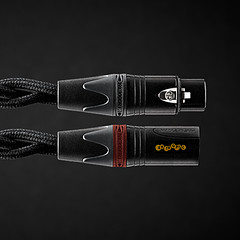 XLR C-MARC™ Entropic Process
Stratospheric performance for the audio connoisseur
From
$
1615
XLR C-MARC™ Entropic Process
Stratospheric performance for the audio connoisseur
From
$
1615
-
- Digital Cables
-
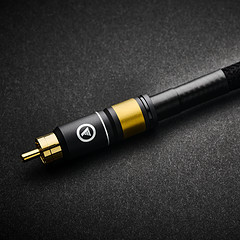 RCA Digital C-MARC™
Cotton-clad unique Litz design • Made only by LessLoss
From
$
510
RCA Digital C-MARC™
Cotton-clad unique Litz design • Made only by LessLoss
From
$
510
-
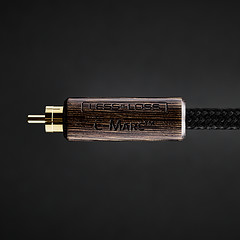 RCA Digital C-MARC™ Entropic Process
Possibly the most subtle digital cable on the planet
From
$
858
RCA Digital C-MARC™ Entropic Process
Possibly the most subtle digital cable on the planet
From
$
858
-
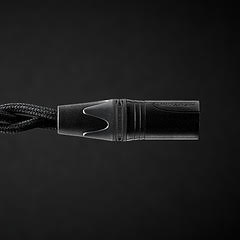 XLR Digital C-MARC™
Featuring a whopping 3 x 2.3mm2 Litz construction
From
$
570
XLR Digital C-MARC™
Featuring a whopping 3 x 2.3mm2 Litz construction
From
$
570
-
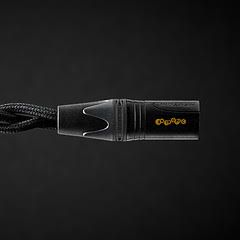 XLR Digital C-MARC™ Entropic Process
Stratospheric performance for the audio connoisseur
From
$
969
XLR Digital C-MARC™ Entropic Process
Stratospheric performance for the audio connoisseur
From
$
969
-
- Grounding Cables
- Bulk Wire and Cable
- Signal Conditioners
-
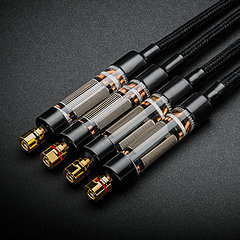 Firewall for Loudspeakers
Firewall for Loudspeakers
C-MARC™ Plug-and-Play Speaker signal conditioning like you've never imagined From $ 1656 -
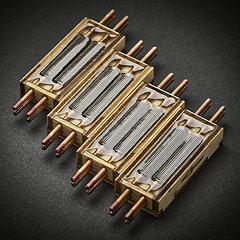 Firewall for Loudspeakers
Firewall for Loudspeakers
DIY version for Self-Installation For the Do-It-Yourself project enthusiast • Solder yourself From $ 800 -
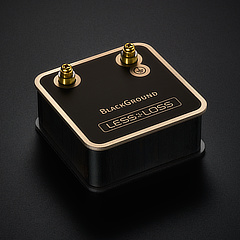 BlackGround DIY
Voltage-ground interface for a variety of applications
From
$
446
BlackGround DIY
Voltage-ground interface for a variety of applications
From
$
446
-
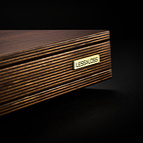 BlackGround 8x/10x Speaker Base
Plug-and-play loudspeaker signal conditioner
From
$
3096
BlackGround 8x/10x Speaker Base
Plug-and-play loudspeaker signal conditioner
From
$
3096
-
- Power Conditioners
-
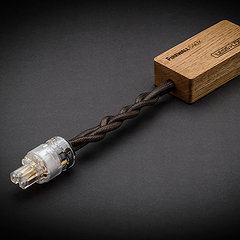 Firewall 640x
Plug-and-play solution for any powered gear
Firewall 640x
Plug-and-play solution for any powered gear
C-MARC™ Entropic Process and standard lead versions From $ 654 -
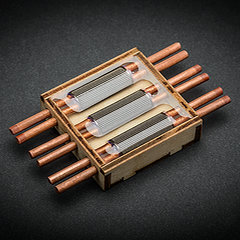 Firewall 640x DIY for Self-Installation
Self-solder and save!
From
$
320
Firewall 640x DIY for Self-Installation
Self-solder and save!
From
$
320
-
 BlackGround DIY
Voltage-ground interface for a variety of applications
From
$
446
BlackGround DIY
Voltage-ground interface for a variety of applications
From
$
446
-
 BlackGround 6x/10x Power Base
Plug-and-play power conditioner
From
$
2350
BlackGround 6x/10x Power Base
Plug-and-play power conditioner
From
$
2350
-
- Power Distributors
- Equipment Feet
- Field Conditioner
- DACs
- Power Cables
- Reviews
- This is definitely the cable to go for. It will almost literally blow your mind. – March 2012, Puresound Magazine
-
I was intrigued by the unanimously positive reviews garnered by these products ...
– by user Raymond Eye
Leaves you speechless
Sensational cables
BEST purchase I've made
Top notch performance
It's a steal
Musical... liquid... 3D
It's not subtle
More than an upgrade
Best I've heard so far
Stellar service
Sounds like a new system
Much more lifelike
Emotional flow
Overwhelming results
More dimensional
Sound is transformative
We were all astounded
Transformed my listening
Sounds so cohesive
Emotionally engaging
- Where to Start
- Free Newsletter
- Newsletter Archive
- B-Stock Alerts
- Shopping Tools
-
Shipping
- Free Shipping Learn about our international shipping policy
-
Return Options
Our satisfaction guarantee
and return policy -
Customs / Tax
UPS expedites local
customs clearance
-
Transaction
- Conditions of Sale Agreement for a smooth business transaction
- Privacy Policy We pledge to keep your information private
-
Terms of Use
Business policies
and agreements
-
Account
-
- Contact Us
-
Meet the Designers
-
- Care to share of your personal experience with our products? We'd be happy to post it!
- Want to learn more about our activities? Our Newsletter is both free and spam-free.
hi-res photos, brochures
logos, press releases, and
print-friendly PDF downloads. -
Contact Us
Connect with Us
-
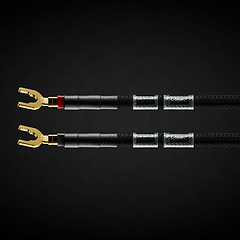
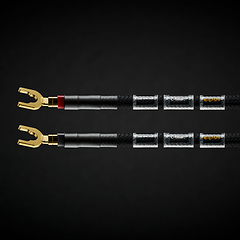
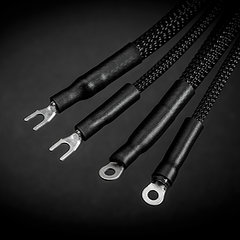
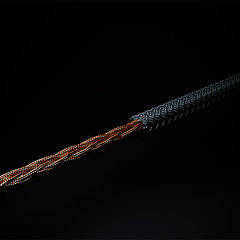
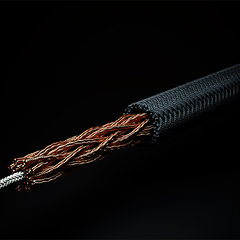
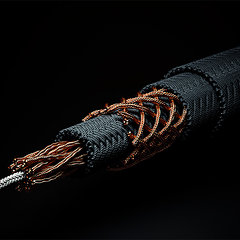
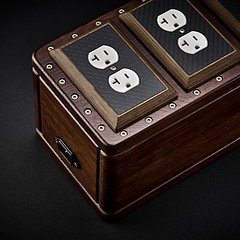
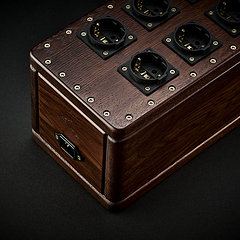

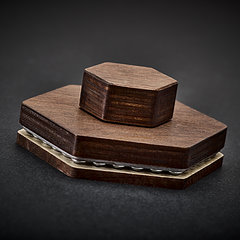
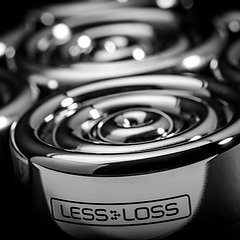
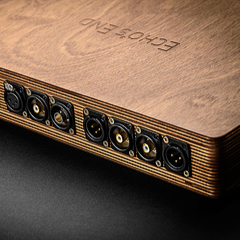
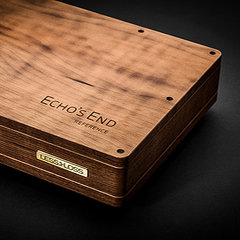
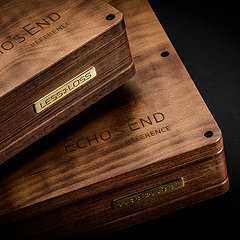
 Beware of Fakes
Beware of Fakes
